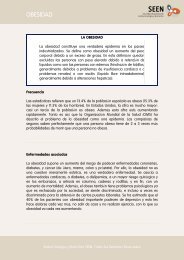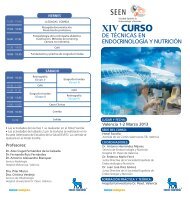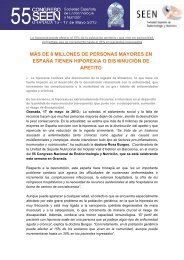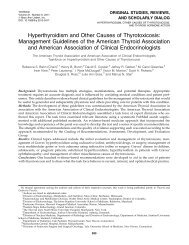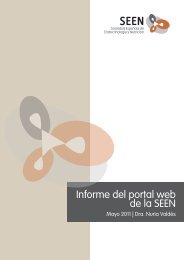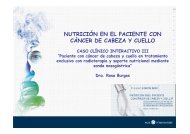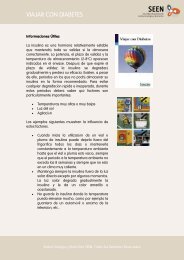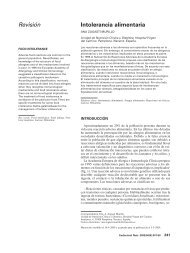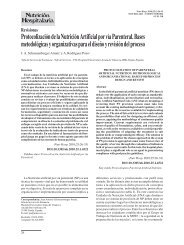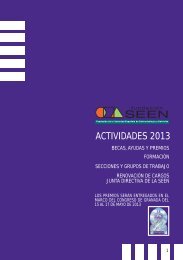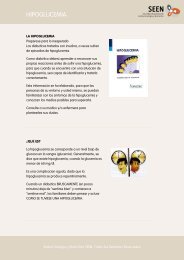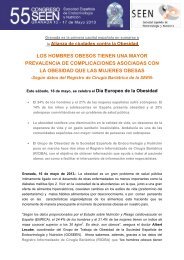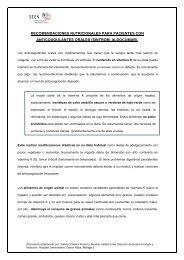Basic Concepts of Fluid and Electrolyte Therapy
Basic Concepts of Fluid and Electrolyte Therapy
Basic Concepts of Fluid and Electrolyte Therapy
Create successful ePaper yourself
Turn your PDF publications into a flip-book with our unique Google optimized e-Paper software.
Oliguria secondary to AKI<br />
Although it is important not to give excess fluid, failure to recognize<br />
<strong>and</strong> treat hypovolaemia (<strong>and</strong> pre-renal AKI) adequately may compromise<br />
organ perfusion <strong>and</strong> result in intrinsic AKI. There is evidence that<br />
patients with oliguric AKI have more severe tubular damage <strong>and</strong> a<br />
worse outcome.<br />
Once a diagnosis <strong>of</strong> AKI has been made the underlying cause must be<br />
established (Chapter 9). The most common causes are hypovolaemia<br />
<strong>and</strong>/or sepsis leading to hypoperfusion <strong>of</strong> the kidneys. Clinical examination<br />
must be performed to establish the patient's volume status <strong>and</strong><br />
the source <strong>of</strong> sepsis must be identified <strong>and</strong> treated promptly. If the<br />
patient is hypovolaemic then appropriate fluid therapy must be given<br />
according to a documented management plan, which requires regular<br />
review <strong>and</strong> defined endpoints (Fig. 9).<br />
In a patient with hypovolaemia <strong>and</strong> oliguric AKI<br />
consider insertion <strong>of</strong> a central venous pressure (CVP) line <strong>and</strong> urinary<br />
catheter (not m<strong>and</strong>atory <strong>and</strong> could introduce infection) to aid<br />
with the assessment <strong>of</strong> volume status<br />
resuscitate with IV fluids (fluid challenge)<br />
stat fluid bolus <strong>of</strong> 500 ml (250 ml if cardiac failure) <strong>of</strong> a balanced<br />
crystalloid (e.g. Hartmann’s solution or Ringer’s lactate)<br />
rapidly. If hyperkalaemia is present (K + >5.5 mmol/l) or suspected<br />
oliguric AKI or rhabdomyolysis 0.9% saline is preferred initially<br />
(no potassium in crystalloid). However, there is no evidence<br />
that administration <strong>of</strong> crystalloids containing 3-5 mmol/l<br />
<strong>of</strong> K + worsen the hyperkalaemia.<br />
75




